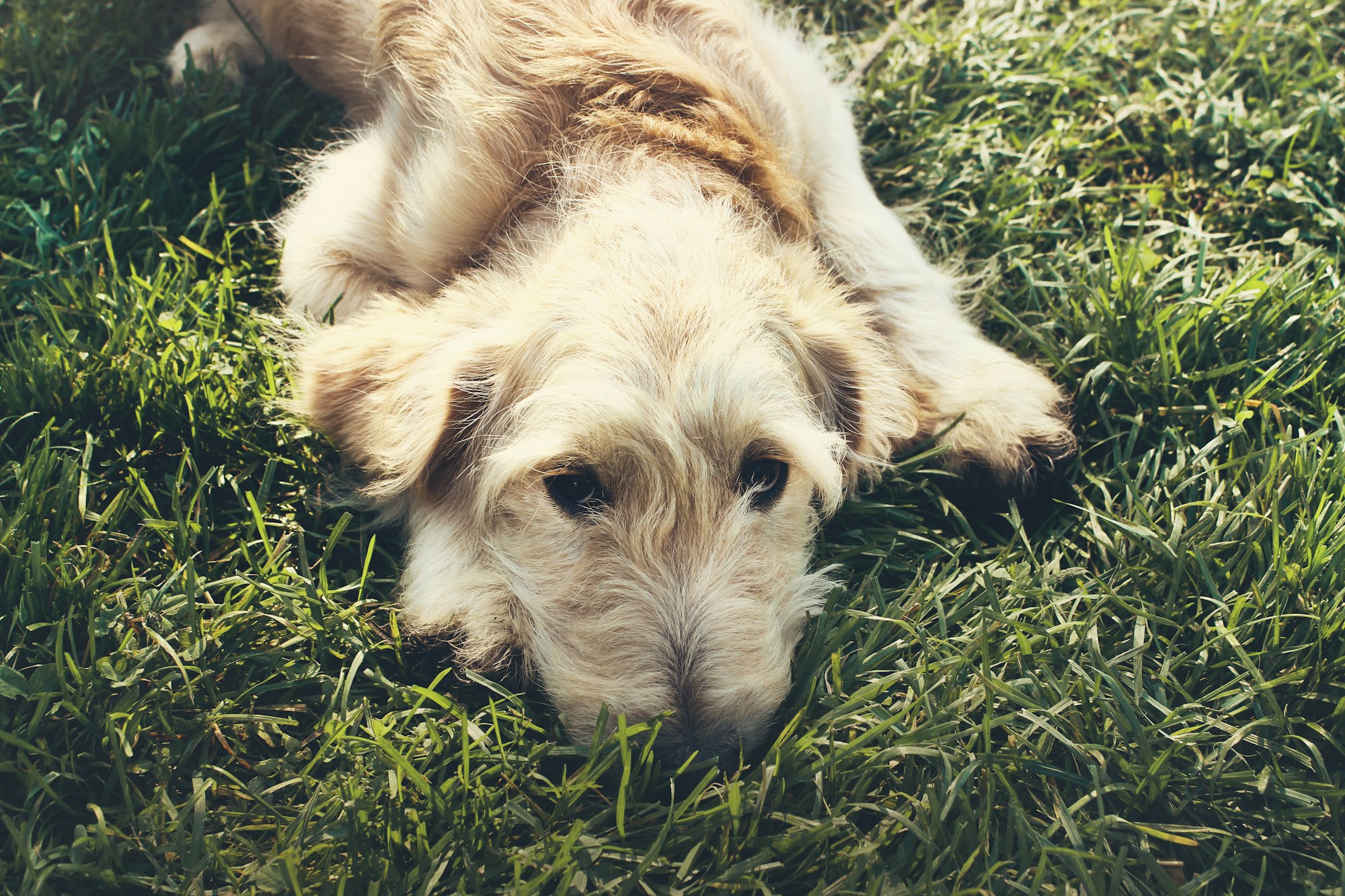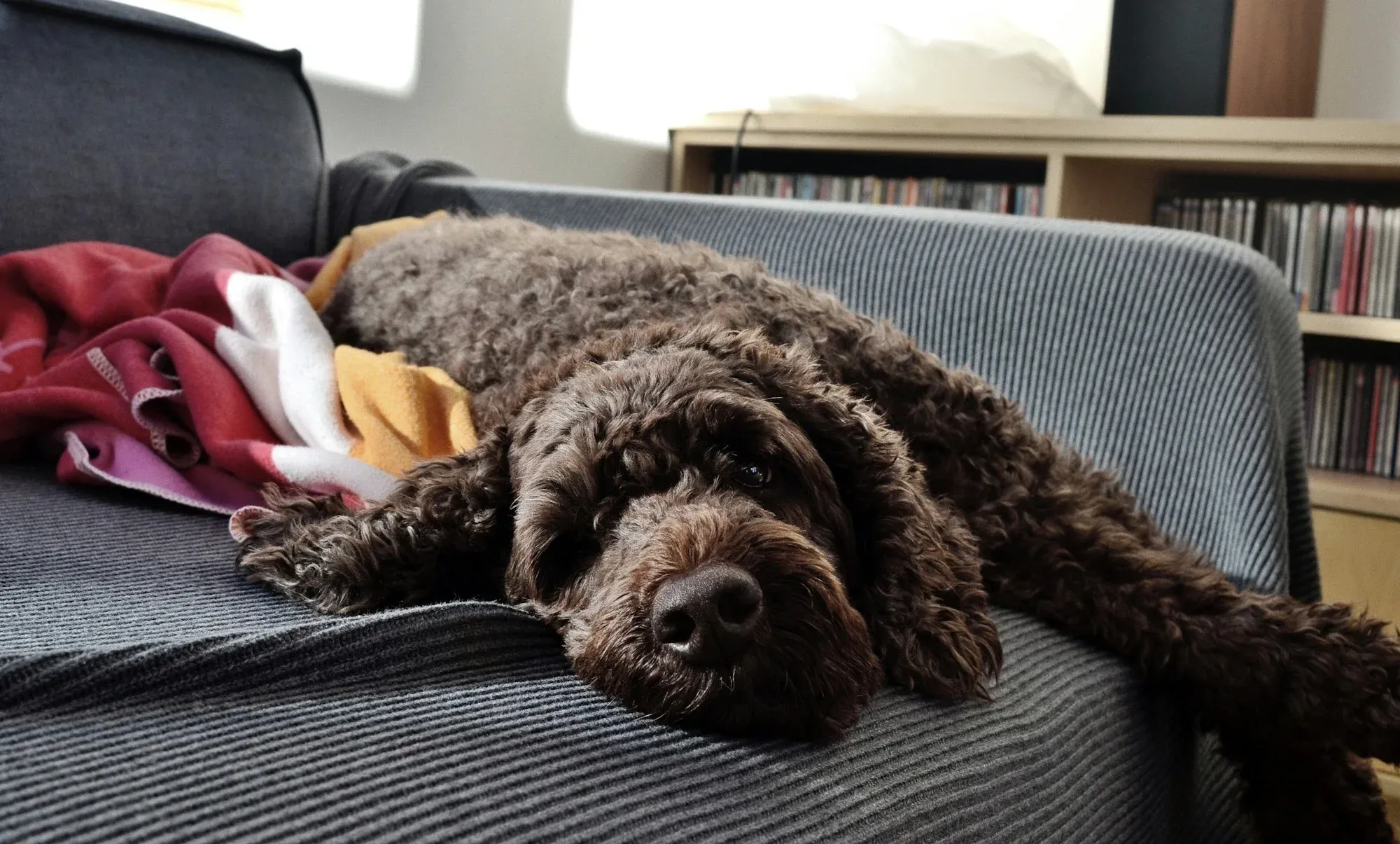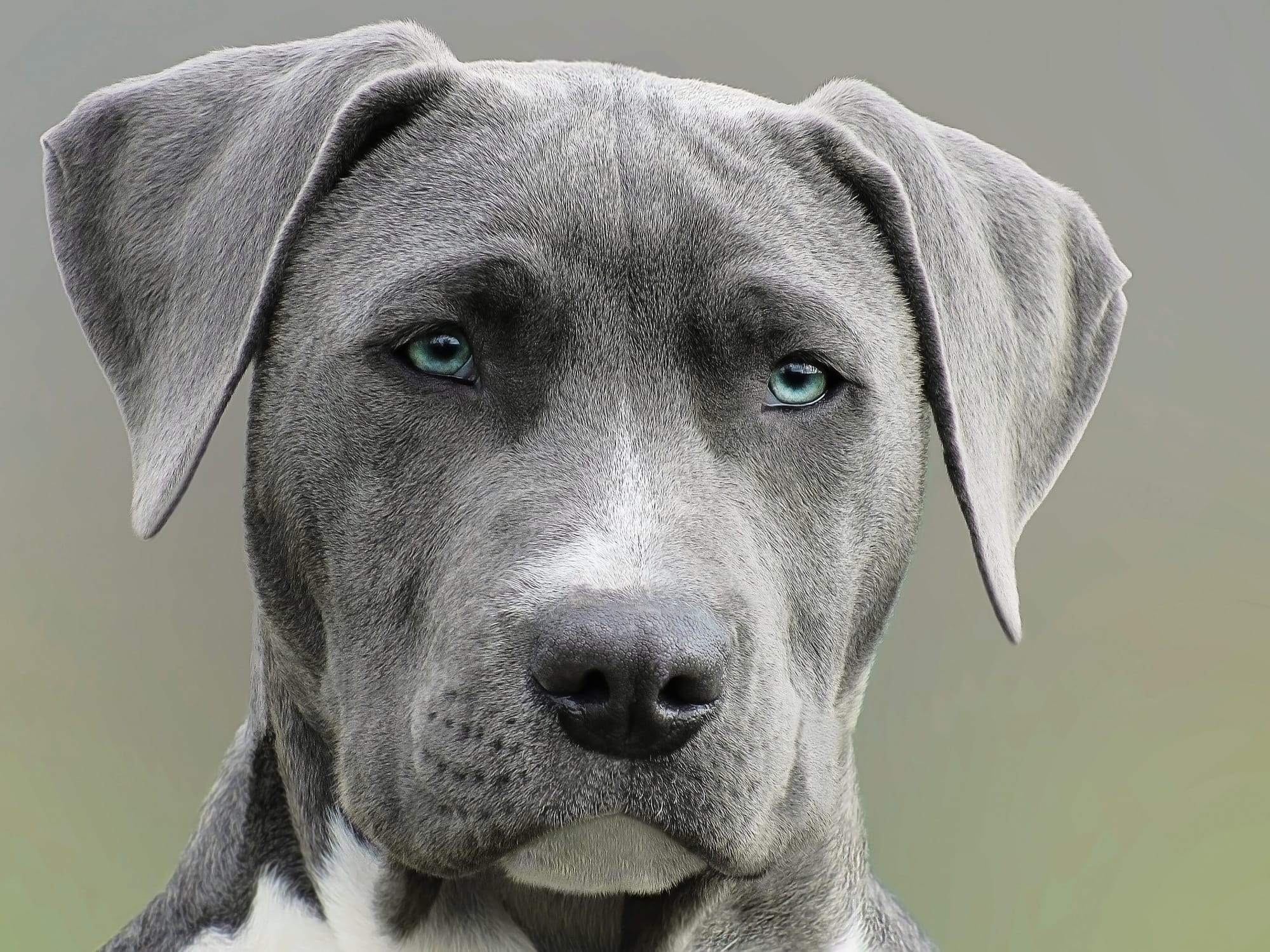What do you get when you cross a German Shepherd with a Poodle? A Shepadoodle. Yep, that’s right. And now you’re probably trying to imagine what that would look like. So we’ve got three words for you. So. Stinkin. Cute!
Curious about the Shepadoodle, or German Doodle as it is sometimes called? Read on to learn all about it!

What Is a Shepadoodle?
We’ve already established that a Shepadoodle is a cross between a German Shepherd and a Poodle. Since the two parents look so different, the resulting puppies can vary quite a bit in appearance.
Most of the time, Shepadoodles will be mainly black and white, or some combination of black and white, perhaps with other colors. Some will be a solid color, usually black, or even gray or golden. Others will have more of a German Shepherd color pattern with patches of black, tan, or brown.
Usually, their hair is medium length but can be straight, wavy, curly, or some combination of all of the above. And while some Shepadoodles might look like a hairier version of a German Shepherd (the horror!) they actually all shed less than a typical German Shepherd.
They are rarely as “hypoallergenic” as a Poodle. However, some people with allergies may be able to tolerate a Shepadoodle better than a German Shepherd.
Sizes and Weights
Shepadoodles are usually bigger dogs, though it depends on the size of the individual parents involved. As you know, German Shepherds are large dogs, standing between 22 and 26 inches at the shoulder and weighing up to 90 pounds.
Poodles come in three different sizes, though the largest version is typically used in this cross. The Standard Poodle is also not a small dog and can stand up to 24 inches tall and weigh up to 70 pounds.
Thus, the typical full-grown Shepadoodle will stand somewhere between 22 and 28 inches and weigh between 60 and 90 pounds. If they lean towards their German Shepherd parent, they will typically be stouter, whereas Poodle-leaning Shepadoodles will be more slender.
You can also find a Mini Shepadoodle, which is a German Shepherd crossed with a Miniature Poodle. Miniature Poodles stand between 10 and 15 inches so the resulting cross tends to be a bit smaller. However, the size can vary drastically depending on which parent the pup takes after.
And, in case you’re wondering, it’s even possible to cross a German Shepherd with the tiniest of the Poodles to create a toy version of the Shepadoodle.
Temperament
As a descendant of two very intelligent dogs, you can bet that the Shepadoodle is a bright one. In fact, they are highly trainable and can learn to perform a wide variety of tasks.
They also tend to be very friendly and affectionate. Though larger ones may unintentionally knock over small children in their excitement, they are generally gentle family dogs.
However, they can also be a tornado if left at loose ends for too long. And when you study the Shepadoodles lineage, it’s not difficult to see why.
Poodles were originally bred as hunting dogs in Germany. Their job was to race after and retrieve the ducks their owners were hunting.
And German Shepherds started as sheepdogs (of course), which requires a lot of running. In modern times, the military and police have applied their considerable intelligence extensively for drug sniffing, bomb sniffing, and other applications.
In short, the Shepdoodle will be happiest if he has a job to do. This type of dog was not bred to lay around on the couch and watch TV all the time. Shepadoodles have a very active mind and must have something to do — or they will find something.
Unfortunately, that usually means tearing up your furniture or digging holes in your backyard if that’s their only option.
Thus, Shepadoodles are not a good choice if you plan to leave them alone for long periods of time. They will go stir-crazy, especially if left in a small space.
Exercise Needs
And that brings us to their exercise needs.
Poodles are known for being hyperactive. As working dogs, German Shepherds have tons of energy. What happens when you put the two together?
You get a crazy fluffball of endless excitement and energy!
Shepadoodles require at least two hours of vigorous exercise and mental stimulation every day. They do not do well as apartment dogs. They are simply too large (in general) and too energetic (definitely, all the time) to handle living in a small space.

In fact, if you don’t have a large backyard for them to run, there must be a dog park or other space nearby where you can and must take them every day.
Unlike other dogs that might be content to lay on the couch until you get home from work, a Shepadoodle will have lost his mind by then — and your couch will have paid the price.
They also need plenty of interaction. Though a large backyard is ideal, he won’t do well by himself day in and day out back there. He needs social interaction and mental stimulation in the form of games, nose work, and other tasks to be content.
Grooming Needs
The phrase “a hairier version of a German Shepherd” might spark visions of hours spent brushing your dog — and still finding hair all over the house. However, the influence of the Poodle parent actually makes the Shepadoodle shed less.
Poodles have hair rather than fur, which means their hair continuously grows like a human’s but doesn’t constantly fall out like most dogs. For you, that means you don’t have to worry about matching your couch color to your dog's so the hair doesn’t show up too badly.
In general, of course.
The texture of the Shepadoodle’s hair can vary widely. It depends on whether he inherits the coarse coat of the German Shepherd or the curly coat of the Poodle. Either type will still need regular brushing — at least a few times a week.
If your Shepadoodle’s hair is more Poodle-like, he’ll need regular haircuts as well.
The Health of the Shepadoodle
Crossbred dogs are sometimes touted as being healthier than purebreds. The “new genes” of the other breed are thought to help counteract any “bad” genes the dog might have gotten from the purebred.
While this is somewhat true, it’s also not a guarantee that your Shepadoodle won’t have any health issues. They are, unfortunately, still somewhat susceptible to the same infirmities as both their parent breeds.
From the German Shepherd side, hip dysplasia is a common concern. They can also be susceptible to an unfortunate condition called degenerative myelopathy. As the disease progresses, it causes weakness and paralysis in the hind end and there is no known cure or even treatment.

For their part, Poodles contribute to progressive retinal atrophy diseases. These can crop up in both puppies and older dogs and will eventually lead to blindness.
The biggest concern for Shepadoodles is a health concern that both parent breeds are prone to — bloat. This uncomfortable and life-threatening condition happens when gas builds up inside the dog and twists his stomach — cutting off the blood supply.
However, in general, the Shepadoodle is a healthy dog. Though some individuals may have the misfortune to be plagued by one of these health issues, it is rare.
On average, Shepadoodles enjoy a long lifespan ranging from 10 - 14 years.
History of the Breed
Most of the hybrid Doodle breeds have come about recently after Australian trainer Walter Conron popularized the Labradoodle in the late 1980s. A blind woman in Hawaii reached out seeking a hypoallergenic guide dog that her highly allergic husband could handle.
Conron tried unsuccessfully to train Poodles but had luck with a Poodle/Labrador Retriever cross. However, the stigma was strong about crossbred dogs back then. Through a marketing gimmick and the adorable “Labradoodle” name, Conron managed to break the stigma and unintentionally spark the doodle craze of the last 30 years.
However, Shepadoodles actually predate the craze by a couple of decades. Conron wasn’t the first to attempt to create a dog with Poodle hair and the desirable characteristics of another breed.
Back in the 1960s, the U.S. Army was looking to create a low-shedding version of the German Shepherd. They decided to try a cross between these two breeds and found exactly what they were looking for.
Taking Home a Shepadoodle
Are you interested in a Shepadoodle as your next pet? Shepadoodles are loving and make great companions, however, they do need to have the right conditions. You need to have lots of time to devote to exercising and stimulating your Shepadoodle companion.
Though not aggressive, they can be very energetic and may not be the best choice for families with small children. And while they generally get along with other animals (especially if socialized well) small animals are fun to chase.
All that said, if you are an active family and plan to give a Shepadoodle a job, you’ll have a friend for life in one of these adorable dogs!
For more helpful articles about pet-parenting tips, check out the Off Leash blog at TryFi.com.
Want to know more about TryFi.com? The Fi Dog Collar is a GPS tracking collar that not only keeps track of your dog’s location, activity levels, and sleep patterns, but it also alerts you if your dog escapes your backyard. This is the fastest way to find your dog after an escape. Try the Fi Dog Collar today!

